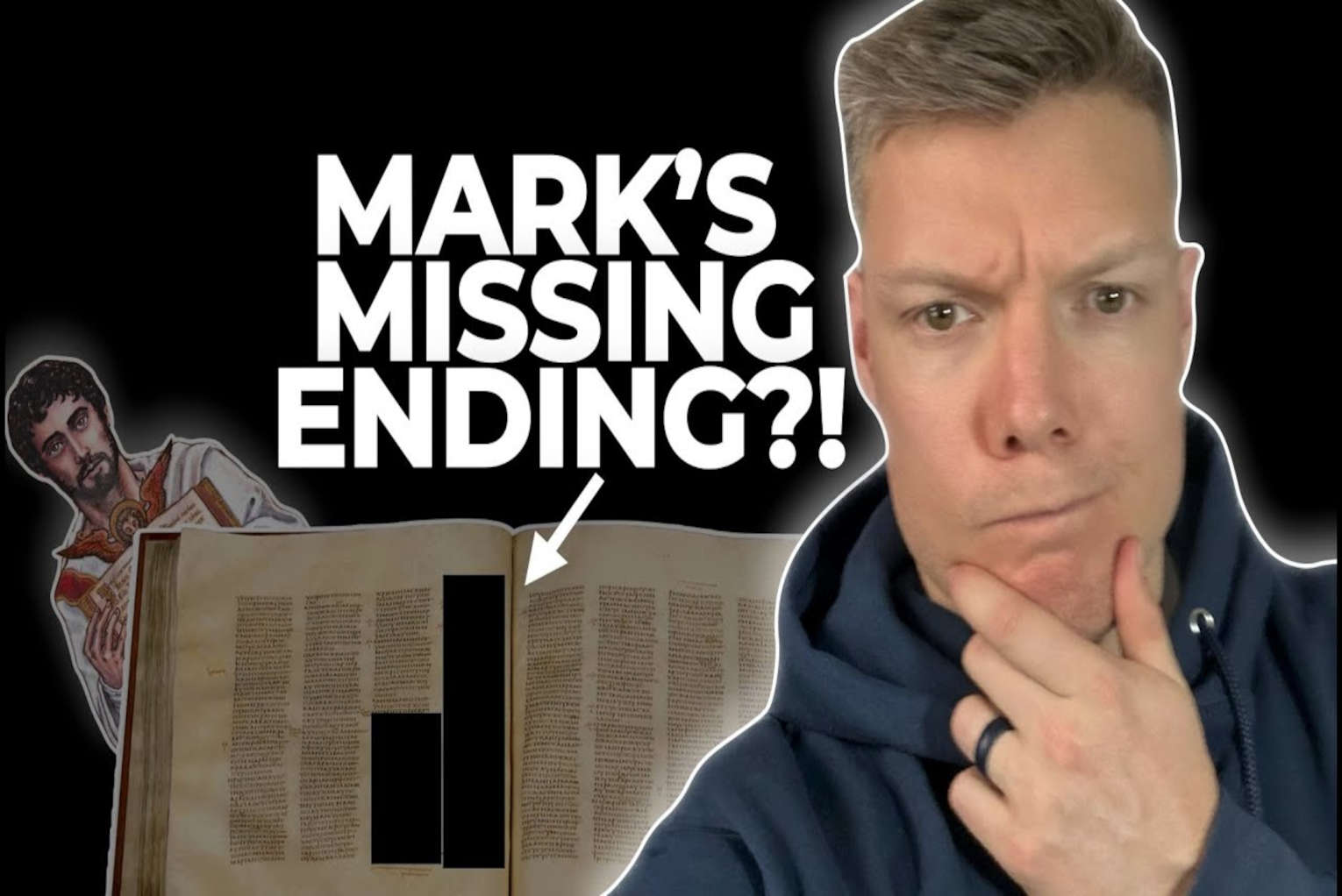If you’ve ever read the Gospel of Mark all the way to the end in a modern Bible, you may have noticed something a little strange. Right after verse 8 in chapter 16, there’s often a note—and a lot of white space.
The New International Version, for example, includes this disclaimer: “The earliest manuscripts and some other ancient witnesses do not have verses 9–20.”
This strange note is more than just a textual footnote. It opens the door to one of the most fascinating and debated topics in New Testament scholarship: Did the Gospel of Mark originally end at verse 8? Or was something lost—and later reconstructed?
Breaking News. Spirit-Filled Stories. Subscribe to Charisma on YouTube now!
Christian apologist and textual researcher Wes Huff dives into this issue in a recent video, offering both clarity and caution.
“Mark 16:9-20 is found in nearly every New Testament manuscript and is the single longest textual variant in the New Testament,” Huff said. “However, it is missing from two very significant manuscripts: Codex Vaticanus and Codex Sinaiticus.”
So what exactly is going on at the end of Mark’s Gospel?
1. What’s so special about these ancient manuscripts?
Huff walks viewers through the three major ancient manuscripts used to analyze Mark’s ending: Codex Vaticanus, Codex Sinaiticus and Codex Alexandrinus.
Here’s what makes them significant:
- Codex Vaticanus omits verses 9–20 but leaves an entire blank column at the end of Mark—a unique feature nowhere else in the manuscript. “Nowhere in the entirety of Vaticanus’s New Testament do we ever see anything other than when the book is finished, the next book immediately starts in the following column,” Huff said. “The only place… where an entire blank column is left is at the end of Mark.”
- Codex Sinaiticus also omits the longer ending but features unusual scribal behavior: a change in handwriting, expanded lettering, and a highly decorative marker. “Mark’s [decorative scribal marker] is not only more decorative in style but measures 6 cm in length. It’s more than twice the size of the other decorative markers we find.”
- Codex Alexandrinus, the earliest to include the longer ending, also has a standout decorative flourish. “That particular manuscript, though it does include Mark 16:9-20… differs significantly from the ending of the other gospels and is larger.”
These paratextual details—the spacing, styles and visual cues—are not random. They’re intentional.
“Scribes and copyists tend to do things on purpose when it comes to these features,” Huff said.
2. How many endings of Mark are there?
Believe it or not, there isn’t just one disputed ending—there are five different endings found in the manuscript tradition.
According to Huff, these include:
- An abrupt ending at verse 8 (as in Vaticanus and Sinaiticus)
- A shorter alternative ending
- The longer ending (verses 9–20, most commonly printed today)
- A version in Codex Washingtonianus with an extra paragraph between verses 14 and 15
- A hybrid version combining elements of more than one ending
Of all these, only two are seriously considered by scholars:
“What we’re looking at are either the complete longer ending or the shorter ending simply stopping at verse 8,” Huff explained.
3. So, is it Scripture or not?
Huff makes his position clear. He doesn’t believe verses 9–20 are original to Mark’s Gospel—and, therefore, he doesn’t view them as inspired Scripture.
“I do not think Mark 16:9–20 is original. I don’t think Mark wrote it and therefore I don’t think it’s inspired Scripture.”
Still, he believes the ancient scribes were doing their best to preserve what they had and alert future readers to the discrepancies. In his words:
- “I think the internal evidence for its exclusion is strong.”
- “The scribes… are themselves aware of idiosyncrasies going on in the manuscripts that they are copying from.”
- “They are noting in the margins or in somewhere around the text to indicate to the reader and to subsequent copyists that something’s going on here. You need to take notice.”
Huff also points out the abrupt ending in verse 8 isn’t as grammatically odd as it seems. While it ends in the Greek word ‘gar’ (“for”), that’s not without precedent.
“Plato actually ends his work The Republic with gar as the last word,” he noted.
So what does this all mean for the everyday reader?
At the very least, it shows that early Christians and scribes cared deeply about accuracy—enough to leave markers, spacing and clues for future generations to investigate.
Whether you accept the longer ending or not, the textual tradition reminds us that Scripture transmission was taken seriously, even in the uncertain moments.
Join Charisma Magazine Online to follow everything the Holy Spirit is doing around the world!
James Lasher is staff writer for Charisma Media.







































